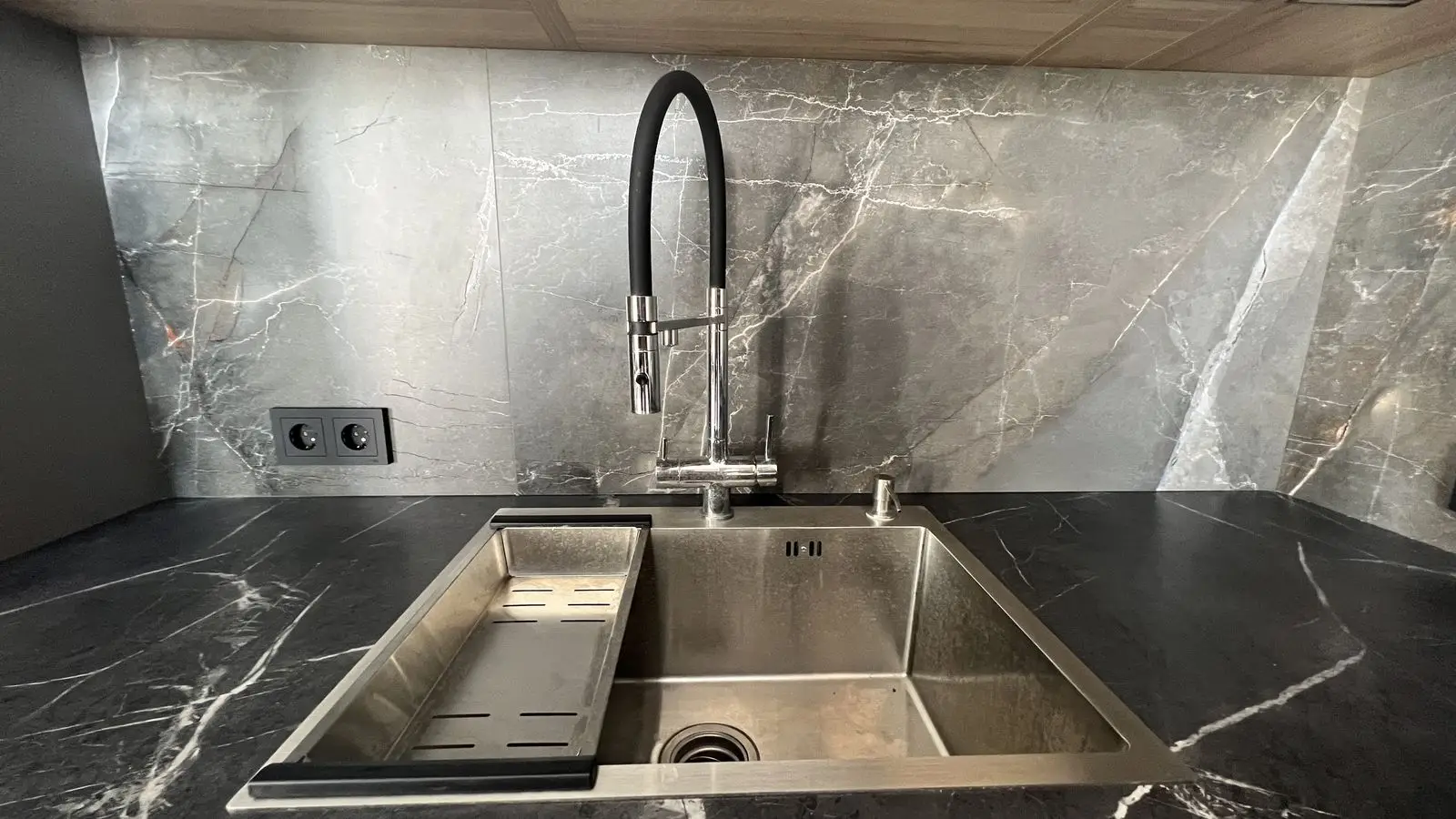How to Clean and Protect Faucets from Limescale and Grime
Learn why faucets collect limescale, soap scum and grease, and how to clean them with citric acid, 1:1 vinegar, baking soda with lemon, plus simple protection tips.

© E. Vartanyan
Bathroom and kitchen faucets are magnets for residue. Hard water leaves pale, chalky marks; the bathroom adds soap film; the kitchen piles on grease and traces of dish soap. Even steady cleaning won’t always stop a once-shiny surface from turning spotty, and pricey cleaners can struggle with stubborn deposits. Below are straightforward ways to extend a faucet’s “lifespan” and keep it presentable without fuss.
Why faucets get dirty
The main culprit is hard water. As water dries, dissolved minerals settle on the metal and form whitish spots. In bathrooms, soap scum layers on top; in kitchens, grease and leftover detergents do the same. If the faucet isn’t dried after use, those residues build up and get harder to remove over time.
Simple home remedies that work
These pantry-level options are easy to mix and surprisingly effective.
Lemon acid solution
Dissolve 1 tablespoon of citric acid powder in a glass of water. Apply to the faucet, wait 5–10 minutes, then wipe with a sponge and rinse. This is gentle enough for routine cleaning.
White vinegar (diluted)
Use with care, especially on finishes sensitive to acids. Mix vinegar and water 1:1, apply to the stained areas, then wipe. For old limescale, make a compress: soak a cloth in the solution, lay it on the spot, and leave it for about 30 minutes.
Baking soda with lemon juice
Combine baking soda with lemon juice into a thick paste. Spread it on problem areas and let it sit 10–15 minutes. Remove the residue with a soft sponge. This helps with greasy traces and small marks.
Laundry soap
For a more delicate clean—useful on matte or unusual finishes—rub laundry soap into a slurry, apply briefly, then rinse.
Keep the shine longer: easy protection
Once the faucet is clean, a light barrier helps slow new spots.
Petroleum jelly
On a clean, dry surface, apply a thin layer of pharmacy-grade petroleum jelly. It creates a water-repellent effect that discourages droplets from sticking. Wipe away any excess to avoid tackiness. Reapply every 2–3 weeks.
Wax candle or parchment paper
Rubbing the faucet with a regular wax candle or silicone-coated parchment leaves a protective film that makes water bead and slide off. Repeat at least once a week for best results.
Store-bought cleaners
If you’d rather skip mixing solutions—or home methods aren’t enough—use ready-made products. Always read the instructions closely, especially if your faucet has a nonstandard or specialty finish.
Everyday habits that make a difference
• Dry the faucet after each use.
• Avoid abrasive sponges.
• Do a light clean once a week.
• If possible, add a water filter to reduce hardness.
Consistent care and small preventive steps keep a faucet looking bright and spare you from tackling heavy, set-in grime later.
